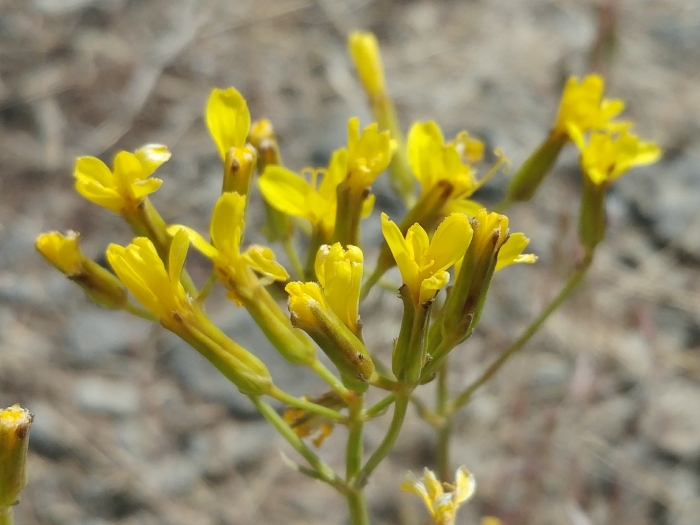Tapertip Hawksbeard
(Crepis acuminata)
Tapertip Hawksbeard (Crepis acuminata)
/
/

© Casey H. Richart
CC BY 4.0
Image By:
© Casey H. Richart
Recorded By:
Copyright:
CC BY 4.0
Copyright Notice:
Photo by: © Casey H. Richart | License Type: CC BY 4.0 | License URL: http://creativecommons.org/licenses/by/4.0/ | Uploader: pileated | Publisher: iNaturalist |

























Estimated Native Range
Summary
Crepis acuminata, commonly known as tapertip hawksbeard, is a perennial herb that is native to a variety of open habitats, including sagebrush deserts, meadows, and the edges of coniferous forests in the western United States. It is typically found in regions from eastern Washington and California to central Montana, Colorado, and northern New Mexico. This species can reach up to 28 inches in height and is characterized by its woolly, branching stems and gray-green leaves that are deeply divided into triangular lobes. During its flowering season, which spans late spring to early summer, tapertip hawksbeard produces an inflorescence consisting of clusters of bright yellow ray florets. These flowers are notable for lacking disc florets and for their narrow achenes that are topped with a pappus of white bristles, aiding in seed dispersal.
Tapertip hawksbeard is valued for its drought tolerance and ability to thrive in poor soils, making it a suitable choice for xeriscaping and naturalistic plantings. It is also used in wildflower meadows where its cheerful yellow flowers can attract pollinators such as bees and butterflies. For successful cultivation, it requires well-drained soils and full sun exposure. While it is generally low-maintenance, it can be susceptible to root rot in overly moist conditions.CC BY-SA 4.0
Tapertip hawksbeard is valued for its drought tolerance and ability to thrive in poor soils, making it a suitable choice for xeriscaping and naturalistic plantings. It is also used in wildflower meadows where its cheerful yellow flowers can attract pollinators such as bees and butterflies. For successful cultivation, it requires well-drained soils and full sun exposure. While it is generally low-maintenance, it can be susceptible to root rot in overly moist conditions.CC BY-SA 4.0
Plant Description
- Plant Type: Herb
- Height: 1-2 feet
- Width: 0.5-1 feet
- Growth Rate: Moderate
- Flower Color: Yellow
- Flowering Season: Spring, Summer
- Leaf Retention: Deciduous
Growth Requirements
- Sun: Full Sun, Part Shade
- Water: Low
- Drainage: Fast, Medium
Common Uses
Bee Garden, Border Plant, Butterfly Garden, Low Maintenance
Natural Habitat
Native to sagebrush deserts, meadows, and the edges of coniferous forests in the western United States
Other Names
Common Names: Tapertip Hawksbeard, Longleaf Or Tapertip Hawksbeard, Long-Leaf Hawksbeard, Mountain Hawk’s-Beard, Tapertip
Scientific Names: , Crepis acuminata, Berinia acuminata, Crepis acuminata subsp. pluriflora, Crepis acuminata subsp. typica, Crepis acuminata var. acuminata, Crepis angustata, Crepis seselifolia, Hieraciodes acuminata, Hieracioides acuminatum
GBIF Accepted Name: